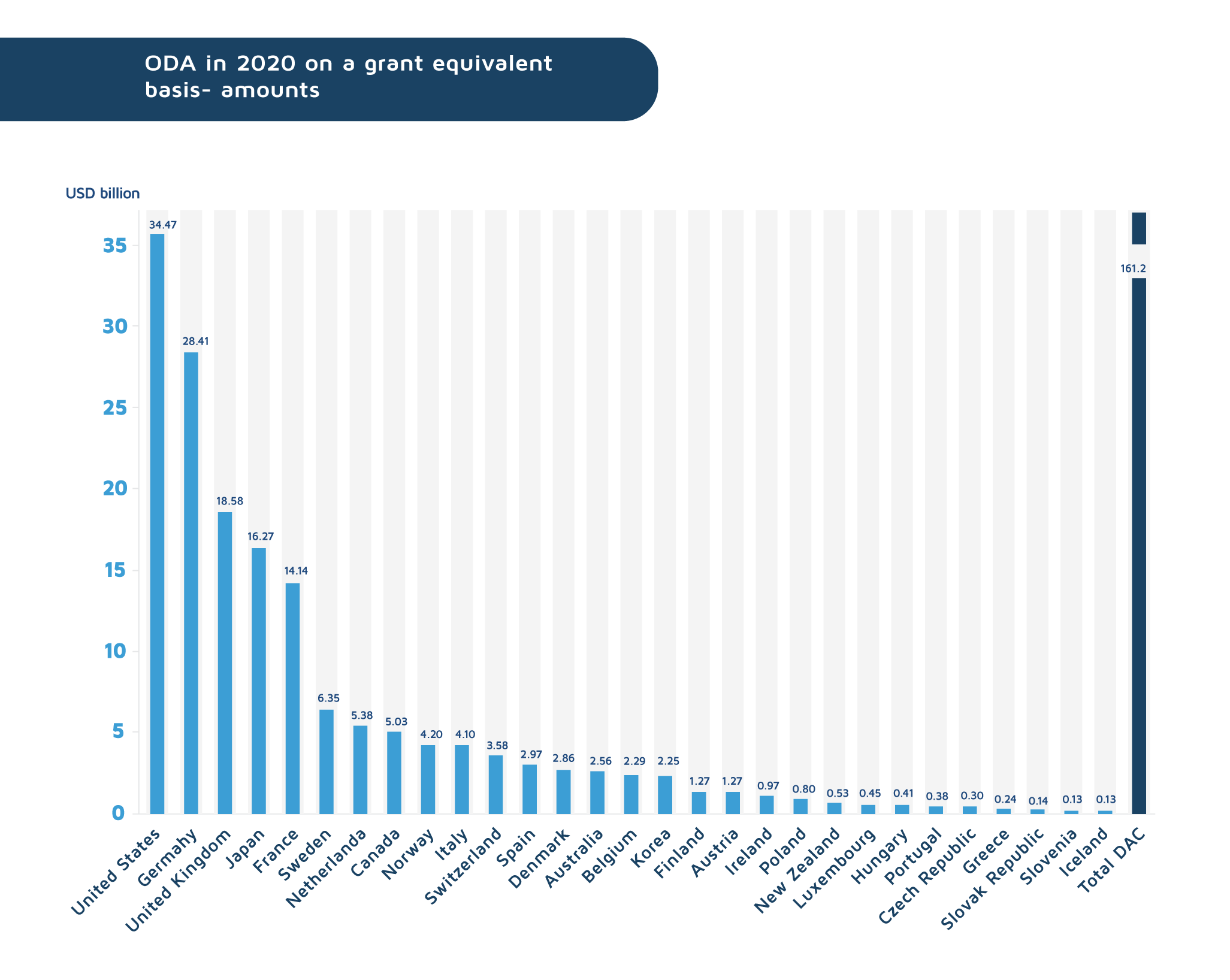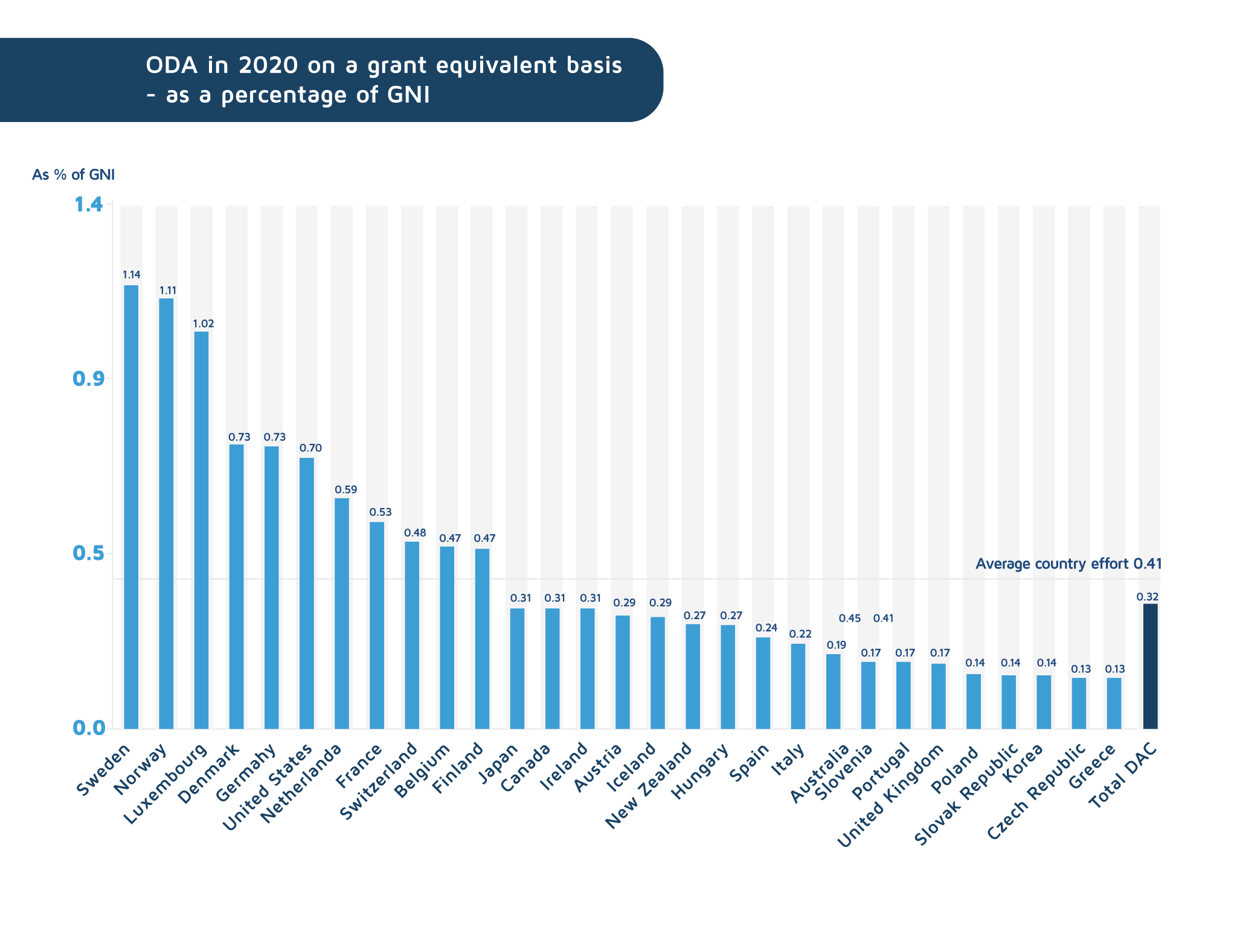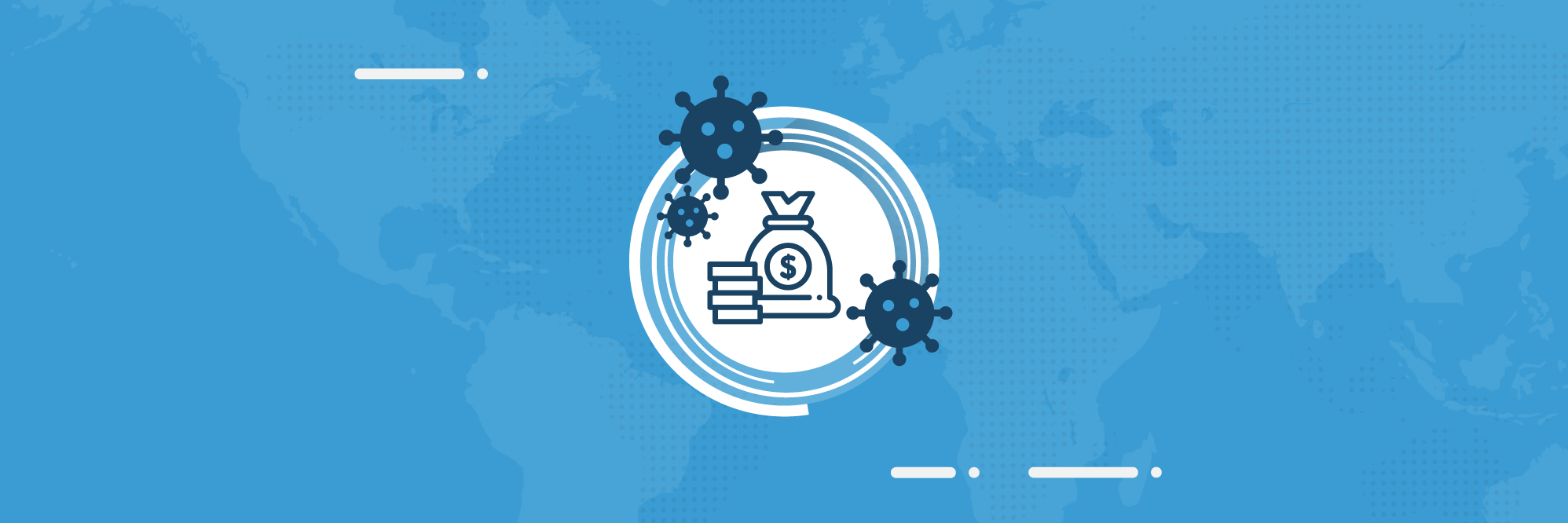The Organization for Economic Co-operation and Development reports record levels of foreign aid from official donors while insisting more efforts are still needed. According to the organization, overall in 2020, US$161.2 billion was provided to developing countries, around 3.5% more than in 2019. The shift in aid was partially due to the coronavirus pandemic as developed countries mobilized their efforts to support emerging nations to tackle the challenges brought about by the pandemic.
Preliminary ODA levels in 2020
In 2020, Development Assistance Committee (DAC) member countries provided US$161.2 billion official development assistance (ODA) which represents 0.32% of their combined Gross National Income (GNI). The breakdown given by the Organization for Economic Co-operation and Development (OECD) reveals that US$158.0 billion was allocated for grants, credits to independent entities, debt relief and aid to multilateral organizations, US$1.3 billion for development-oriented private sector instrument vehicles, and US$1.9 billion for net loans and equities to private companies operating in ODA-eligible countries. The major DAC donors of ODA continued to be the United States followed by Germany, UK, Japan, and France as shown in Chart 1.
Chart 1: DAC members’ official development assistance in 2020 on a grant equivalent basis

In terms of the classification of countries based on ODA grant equivalent as a percentage of GNI, the list is led by Sweden with 1.14% of GNI allocated for overseas aid followed by Norway with 1.11% of GNI (Chart 2). According to the report, even though the UK reached its objective of providing 0.7% of GNI on ODA foreign aid, the amount of aid was 10% less than in 2019 in real terms.
Devoting 0.7% of developed countries’ GNI in the form of ODA to developing countries is a long-standing target of the United Nations.
Chart 2: ODA grant equivalent as percent of GNI in 2020

Furthermore, the OECD reports that in 2020, compared to 2019, DAC member countries increased bilateral sovereign lending by 38.7% in real terms with Portugal recording the highest increase followed by Germany, France, Italy, and Japan. EU Institutions increased sovereign loans by 136%.
Overall, ODA was increased by 16 DAC members, with some intentionally improving the budgets to support emerging nations to tackle the challenges brought about by the pandemic. The biggest increases were recorded by Canada, Finland, France, Germany, Hungary, Iceland, Norway, Slovak Republic, Sweden, and Switzerland. In contrast, Australia, Greece, Italy, Korea, Luxembourg, Portugal, and the United Kingdom recorded the largest reductions in foreign aid. 76% of total ODA was provided by G7 donors while DAC-EU countries provided 45%.
OECD Secretary-General, Angel Gurria, noted: “Governments globally have provided 16 trillion dollars’ worth of COVID stimulus measures yet we have only mobilized 1% of this amount to help developing countries cope with a crisis that is unprecedented in our lifetimes. This crisis is a major test for multilateralism and for the very concept of foreign aid. We need to make a much greater effort to help developing countries with vaccine distribution, with hospital services, and to support the world’s most vulnerable people’s incomes and livelihoods to build a truly global recovery.”
At the same time, DAC Chair, Susanna Moorehead, expressed her gratitude to those countries that did more than was promised. She added.
“The next few years will be tough and the finance we provide must work harder than ever. If we really are going to build forward better and greener, we must focus on the most vulnerable countries and the most vulnerable people in them, especially women and girls.”

